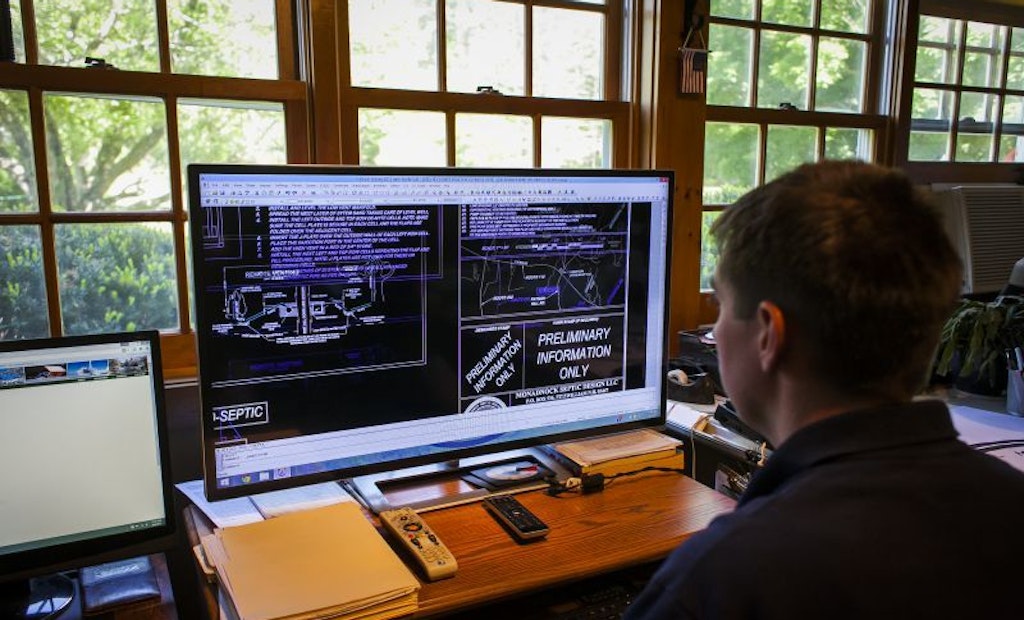Interested in Systems/ATUs?
Get Systems/ATUs articles, news and videos right in your inbox! Sign up now.
Systems/ATUs + Get AlertsThe owners of Monadnock Septic Design in Fitzwilliam, New Hampshire, rely on a trio of special tools to bring 21st century efficiency to their work. Of course, the smartphone is key to the success of any business, but the father and son team of Carl and Scott Hagstrom delve deeper into their top tools.
“When in the field, we rely upon a Spectra Precision TS 305 optical total station,” Carl says.
“The total station is a modern version of a transit on steroids. With the touch of a button, each data point is logged in three dimensions and tied to a common benchmark,” Scott explains. The data is also stored in the TDS Recon data collector, which is plugged into the total station.
Back in the office they use a USB cable to connect the data collector to the office computer and transfer the data. This transfer gives them triple data redundancy. “Running on Windows 8 OS, the Carlson Survey AutoCAD software opens up both the data and a new world of data-depiction tools not available to Dad when he first started the business. Using different mapping layers, we can propose and examine different solutions on the base map without ever touching a pencil. Just as easily, we can move or reorient proposed buildings and do drainage basin calculations,” Scott explains. Each option can be saved for future review and reconsideration if needed.
Together, the total station, data collector and CAD software let Monadnock Septic Design put its logo on plans accurate within fractions of an inch.
The Monadnock logo, however, is not to be found on a vast fleet of motorized equipment. Pickup trucks are the only rolling stock the company owns. When they need earth-moving equipment they rent it, along with an operator. Excavator and other machine selections are determined by the task at hand and the characteristics of the terrain that will be encountered.
“Our first concern on every job is to minimize site disturbance and soil compaction. Tracked machines are always preferred,” Scott says. The site conditions they encounter range from relatively well developed soils to those with good-sized rocks to large boulders and shelf-rock. “We do not have a brand preference, we have capability preferences,” concludes Scott.
To emphasize the point, they jointly recall one project where access was so restricted that only a tracked mini-excavator could reach the actual work site. Since dump trucks were out of the question, they had to use a small skid-steer to transport the aggregate – one bucket at a time, and hand-carry a fiberglass septic tank.
They use many low-tech hand tools as well. A Stony soil auger, T&T Tools probes, flashlights and mirrors, and USDA soil surveys all come to mind. “A digital camera on a pole is as useful a tool for inspecting the interior of a septic tank as capturing photos to document a site’s water features,” Carl says.
Check out the full profile on Monadnock Septic Design in the November issue.






